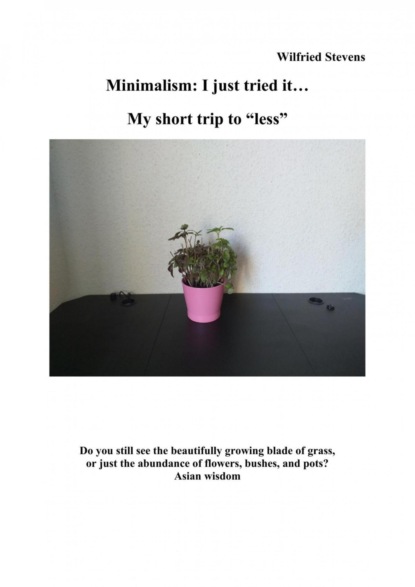Volume 19 pages
0+
About the book
The term «minimalism» is nothing new anymore, and I'd venture to say that more and more people are interested in it. We live in a world of extreme consumerism, where we're offered every conceivable gadget, often made from questionable materials. Just think of the issue of «plastic waste.» Added to this is the thoughtless consumerism, especially when consumers are duped with «cheap» prices. By this, I mean, for example, the countless decorative objects and the many «cheap» electronic items that people simply buy again after a short time because «it costs almost nothing.» Essentially, minimalism is a lifestyle that focuses on the individual «essentials» and seeks to avoid «superfluous things.»
It is particularly applicable in everyday life. The goal of minimalism is to promote simplicity, structure, and everyday functionality in such a way that everyone feels comfortable wanting to change things in order to say goodbye to unnecessary accumulations and the resulting complexity. The greatest resistance is the reduction and relinquishing of possessions in order to create as much free space as possible for what is truly important. The inability to let go is an obstacle, but one that can be overcome, step by step, rather than one step forward and then back. This would be a trivial complacency. Ultimately, the point is not to surround yourself with a large accumulation of material goods; a minimalist must be content in order to be able to let go. There is certainly a positive connection to frugality. Ultimately, the positive aspect is that everyone can decide for themselves the level of minimalism they desire.
